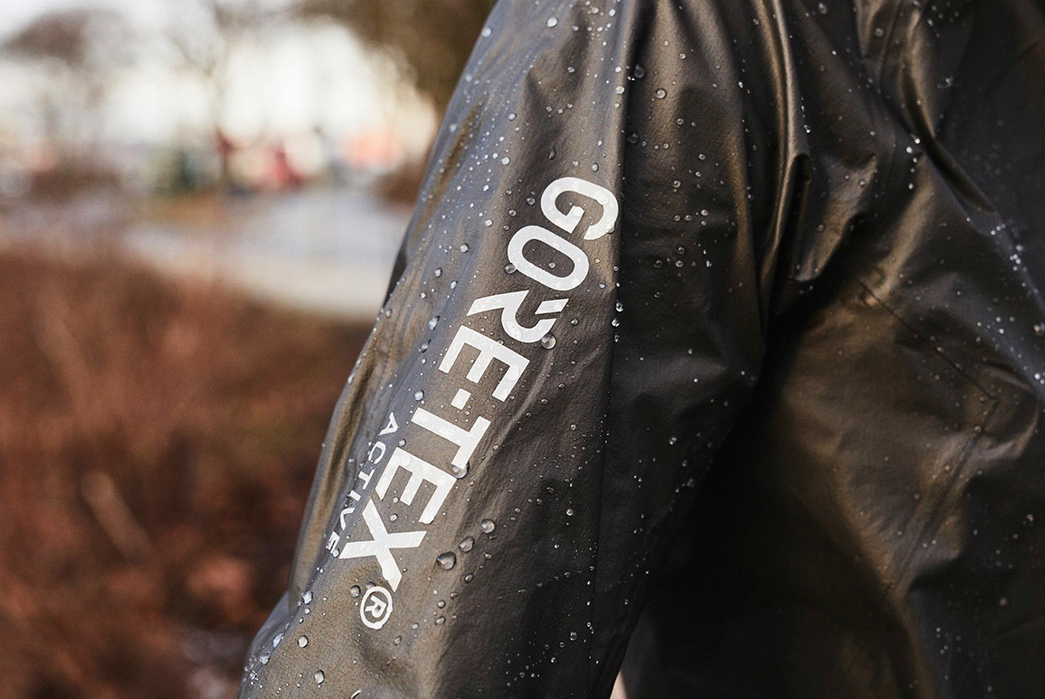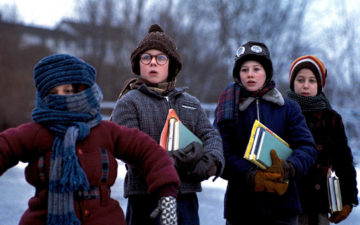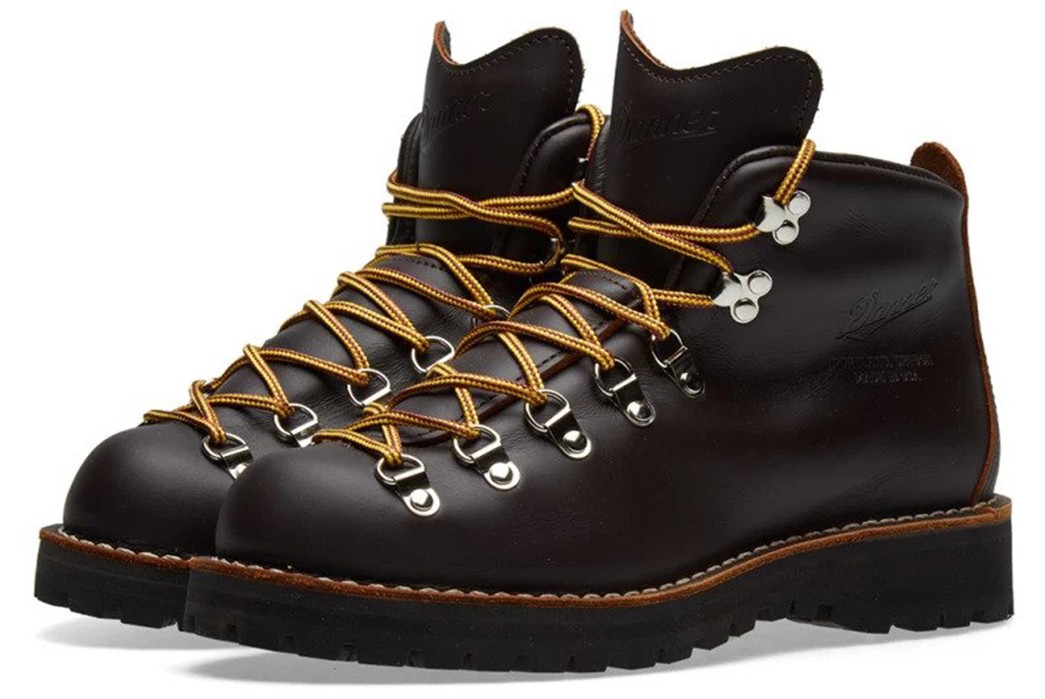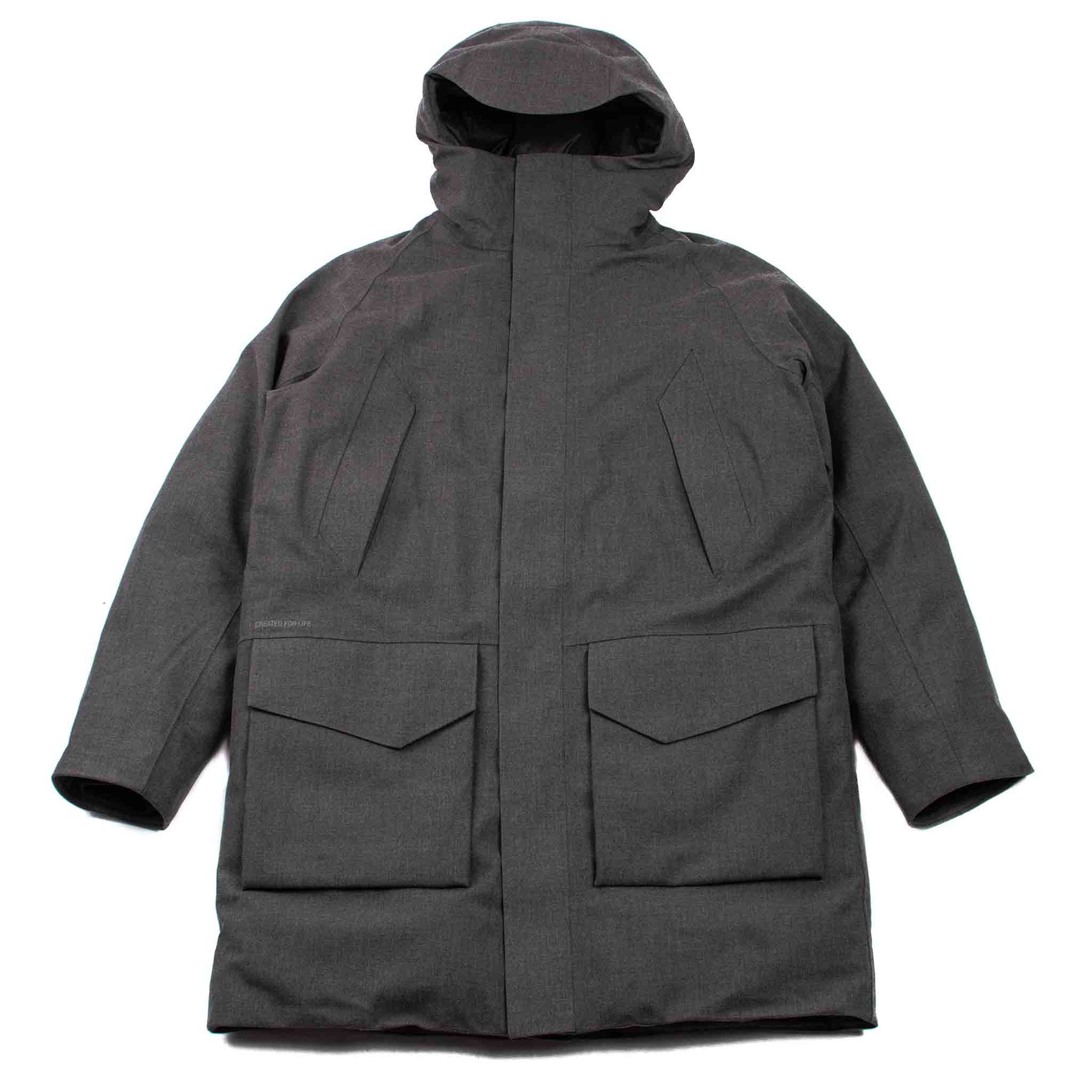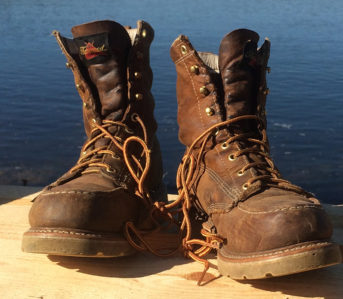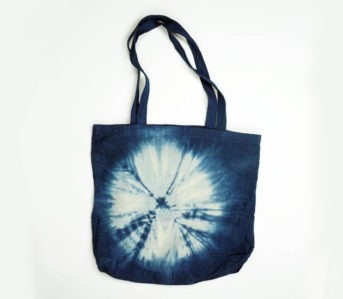As an Englishman living in the U.K., I can say with utmost certainty that rainfall is one of our biggest enemies. It can strike at any time of the year, from a cool summer evening to what was forecast to be a crisp, dry winter afternoon. It’s a sad reality, but back in 1978, us Brits were handed a new weapon in the battle against wet weather. It was called GORE-TEX.
We all know that GORE-TEX keeps us dry, but do we know what GORE-TEX really is? Is it a fabric? Is it a spray treatment? Its been forty years since this cornerstone of performance fabrics entered the market, so let’s take a closer look at GORE-TEX and why we’re willing to shell out an extra hundred bucks on a ski jacket that has it.
What is GORE-TEX?
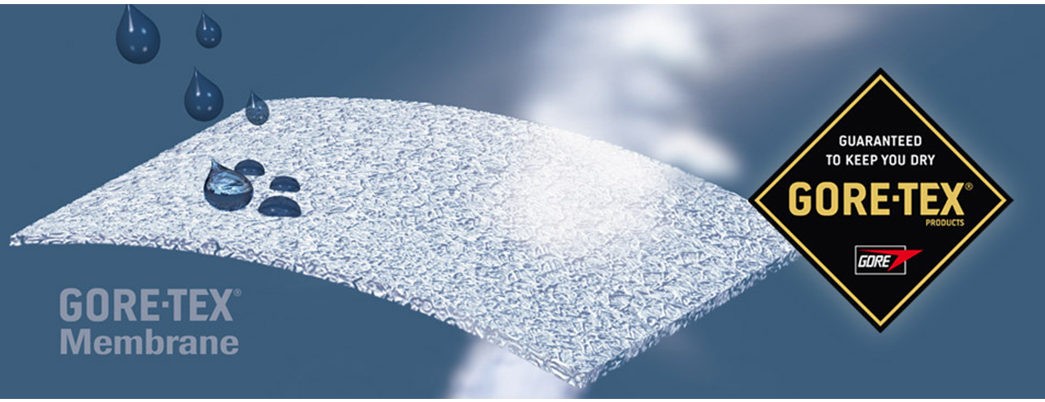
Image via Held
GORE-TEX is, at its most basic level, a membrane that stops liquid water but allows vapor to pass through. This means GORE-TEX keeps you dry from not just the falling rain, but also the water vapor you make while sweating.
The membrane itself made from an expanded polytetrafluoroethylene fiber (also known as Teflon). The stretching of this polymer forms a microporous material with over 9 million pores per square inch. This membrane is bonded with fabrics in a number of ways to make them completely waterproof and windproof.
How Was GORE-TEX Created?

Image via Gore
This process was discovered accidentally by Bob Gore in 1969. While conducting an experiment with heated rods of polytetrafluoroethylene, Gore violently stretched one of these heated rods in frustration. In doing so, he discovered a completely new form of this polymer, now known as ePTFE (extended polytetrafluoroethylene).
It took a few years for Bob Gore to obtain the necessary patents for his revolutionary newly discovered technology, eventually introducing the GORE-TEX brand in 1978.
What is GORE-TEX Used For?
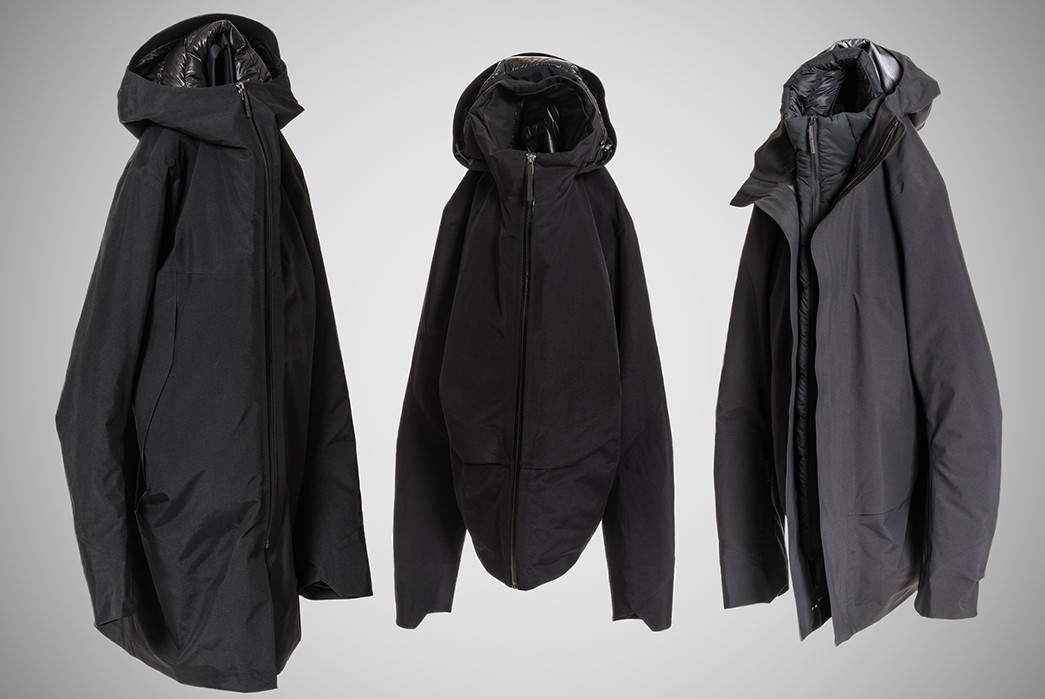
Veilance jackets via Haven
GORE-TEX is chiefly used to make performance clothing and footwear, such as ski jackets, lightweight shells, and hiking boots. Its performance in harsh weather conditions makes GORE-TEX almost synonymous with outdoor culture, pioneered by top outdoor brands such as The North Face, Patagonia, Nanamica, and Arc’teryx, who all use this technology to create the most lightweight and performance driven fabrics they can for their outdoor products.
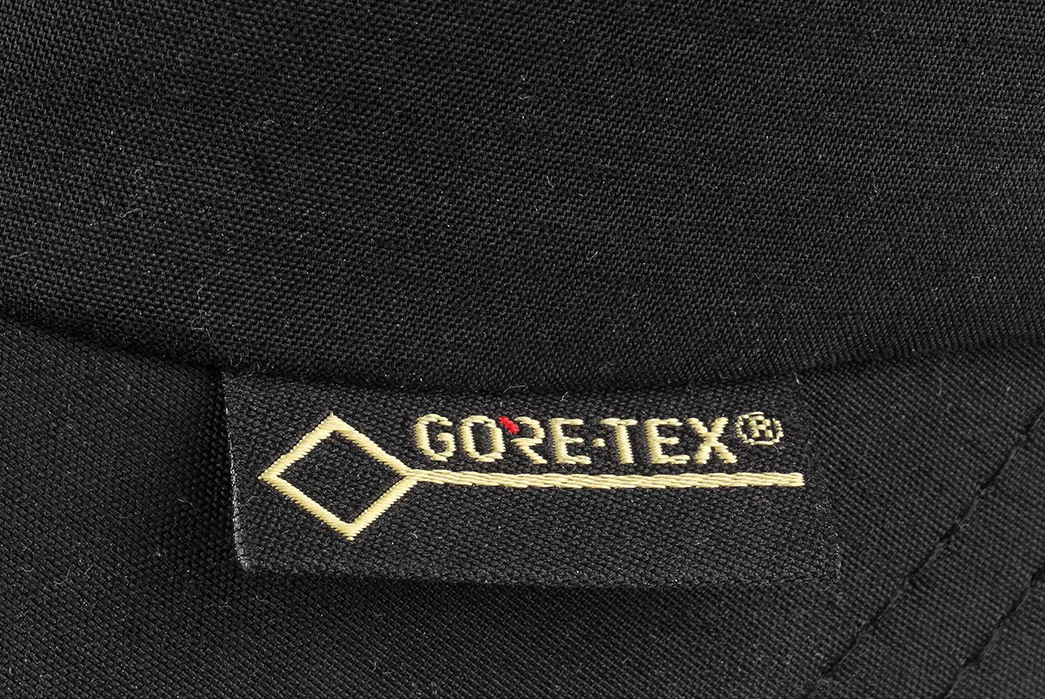
As GORE-TEX membranes can bond to a plethora of materials, GORE-TEX is also used to make hats, gloves, socks, and even bags (in case you’re sweating in a backpack). Gore-Tex is also popular in the world of sneakers with big names such as Nike, Adidas, and New Balance incorporating Gore-Tex technology in the production of their winterized sneakers that can repel water and keep feet dry.
How does GORE-TEX Work?
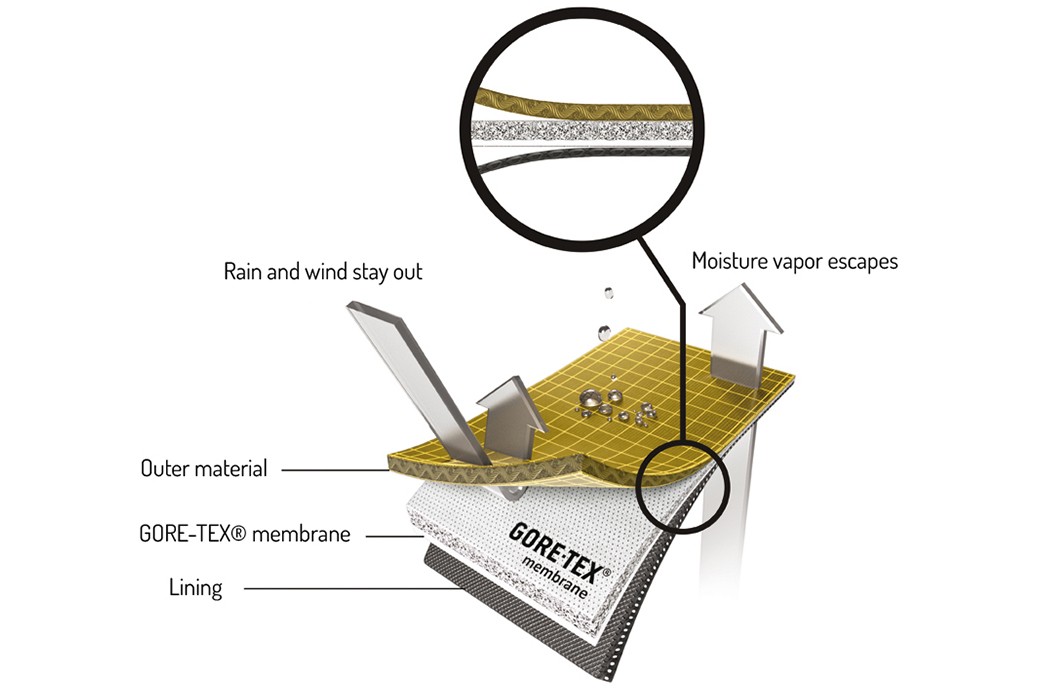
Image via Held
Famously marketed as “Guaranteed to Keep You Dry”, GORE-TEX is waterproof and windproof. The microscopic pores of a GORE-TEX membrane are approximately 20,000 times smaller than a water droplet, meaning no water can pass through fabrics bonded with the membrane. These pores, however, are 700 times bigger than a molecule of moisture vapour, meaning sweat can pass through the membrane. In addition, the molecular structure of the membrane is so complex that most air molecules get scrambled and cannot penetrate the membrane.
In order to create GORE-TEX products, the GORE-TEX membrane is applied as a laminate between a lining and outer textiles. This lamination process can be applied in a number of ways to achieve different performance specifications, the most common layering constructions are:
- 2-Layer Construction – The GORE-TEX membrane is bonded to the outer textile only and not the lining. This allows GORE-TEX garments to have a separate lining which can be combined with insulation like down fill.
- 3-Layer Construction – This method bonds the GORE-TEX membrane to both the outer textile and the lining, making for a more durable fabric. This construction is ideal for lightweight shell jackets.
- Z-Liner – This construction is similar to the 3-Layer variant, however, the Goe-Tex membrane is bonded to an extremely lightweight fabric that floats freely between the outer textile and the lining. This method is good for making complex winter outerwear with layers of fabric and insulation.
In the production of GORE-TEX jackets, the outer layer is usually treated with an ultra-thin Durable Water Repellant polymer (DWR). This treatment that causes water droplets to bead up and roll off the surface of the fabric. The DWR coating wears off over time but can be re-applied at home with a water-repellant spray.
Different Flavors of GORE-TEX
In addition to the different construction types, it comes in a couple variants as well.
In addition to your standard GORE-TEX, there’s also GORE-TEX Active, which is designed for breathability and range of motion, like you’d need in skiing or climbing, while also being lightweight. And there’s GORE-TEX Pro, which doesn’t have an extra camera, but is designed to be extremely durable and abrasion resistant for things like mountaineering.
GORE-TEX Pollution Controversy and PFAS
As mentioned above, GORE-TEX is a manmade material that uses lots of chemicals in its production process. Until recently, some of those chemicals were per- and polyfluoroalkyl substances (PFAS). PFAS are toxic chemicals that have been linked to,”Some cancers, thyroid disease, ulcerative colitis, developmental delays in children, and other health conditions.”
One of the more pernicious things about PFAS is that they don’t break down, meaning extreme care needs to be taken with their disposal or they will persist for upwards of a thousand years, giving them the nickname “forever chemicals”.
A 2023 lawsuit alleges that Gore knew about these dangers since the 1990s as there had been illnesses among their workers that were exposed to them. Gore chose to not only keep using PFAS, but allegedly dumped large quantities of contaminated wastewater that seeped into groundwater that supplies drinking water and the public sewage system. Drinking water near the alleged dumping sites had PFAS levels 10 times higher than EPA recommended levels.
Gore claims they no longer use PFAS in their production process.
Alternatives to GORE-TEX
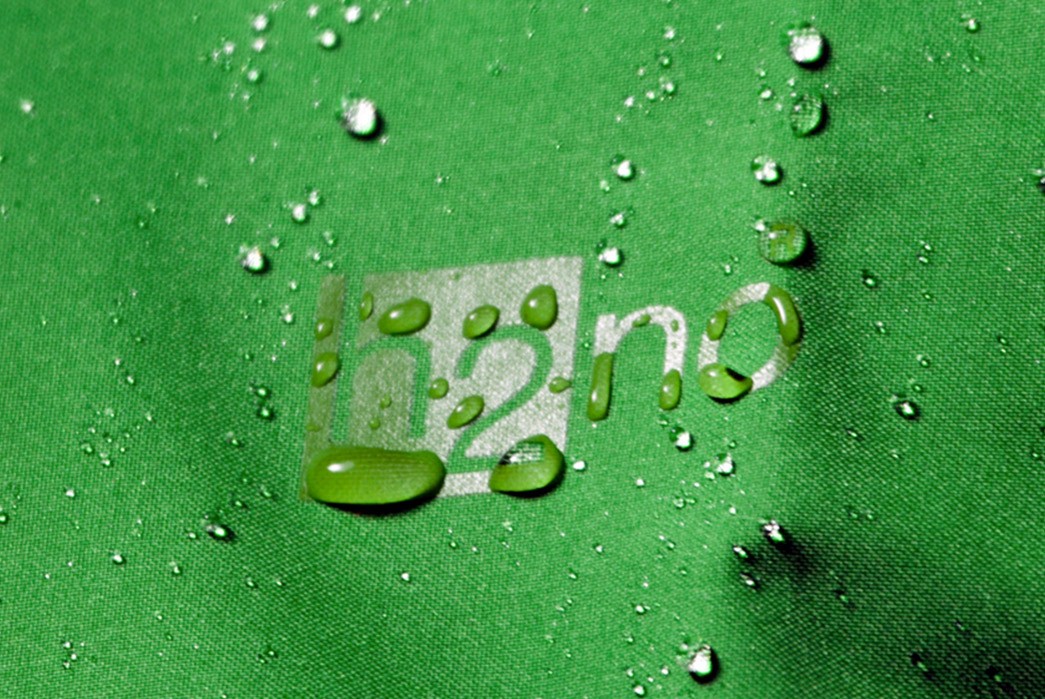
Image via Winterkids
Outerwear materials are a multi-billion dollar industry with GORE-TEX currently standing as the most high-profile brand in the market. But GORE-TEX is not without its challengers. Other brands have utilized treated polymers to produce other membranes with similar effects to Gore-Tex, including:
- eVent – This brand also uses a stretched Teflon membrane similar to that of GORE-TEX without infringing any patents.
- H2No – This is Patagonia‘s in-house brand that uses polyester and polyurethane laminates to mirror the effects of GORE-TEX.
- HyVent – A fabric made in-house by The North Face which also utilizes polyurethane.
- Waxed Cotton – The true heritage option is both breathable, water resistant, repairable at home, and develops a lovely patina, but can become waterlogged in serious outdoor activity.
How to Care For GORE-TEX
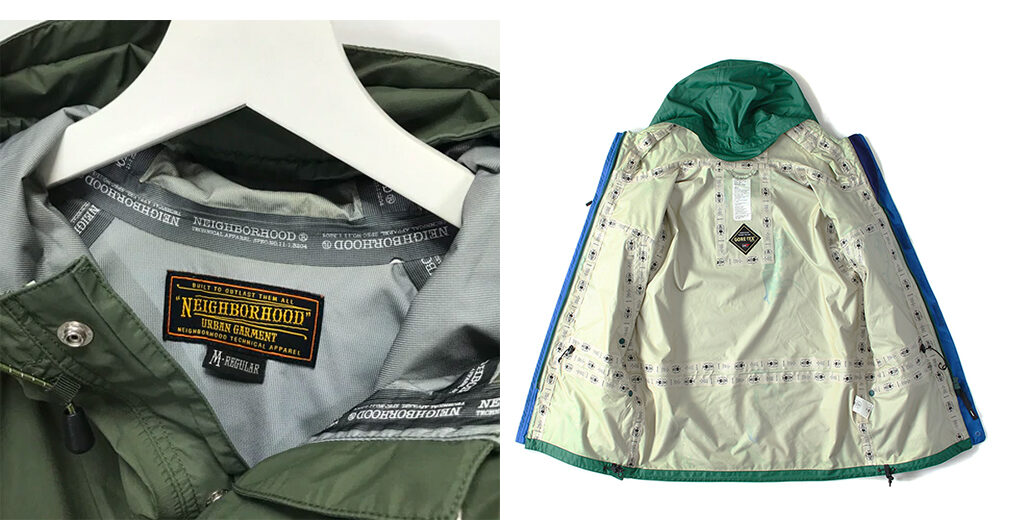
Neighborhood Taped Seam Rain Shelter Jacket via Stylistics (left) and a 2008 WTAPS Gore-Tex Sherpa .
Since GORE-TEX is often paired with technical outdoor apparel, you might get them a bit dirty. Luckily, there’s an easy and straightforward way to clean and care for them, straight from the manufacturer. This primarily has outerwear in mind, but should apply to most GORE-TEX items.
- Zip up all pockets, pit-zips, the main zipper and make sure any other buttons and fasteners are closed. They could become damaged in the washing process if left open.
- Set your machine to delicates or handwash (whatever has minimal spin) on warm (105°F/40°C) and use a small amount of liquid detergent.
- Hang dry or gentle tumble dry on low temperature setting (high could melt your jacket)
- To reactivate the durable water repellant (DWR) coating, let the garment keep spinning on low heat for an additional 20 minutes to reactivate the durable water repellant coating or use an iron on a low setting with a towel in between.
Examples of Products With GORE-TEX
Nanamica Gore-Tex Cap
Tokyo-based brand Nanamica is known for its lightweight garments that utilize technical fabrics and construction methods. This stealthy cap is constructed from 2-Layer Gore-Tex black nylon and features a 6-panel design like a standard ballcap.
Available for $128 at Calculus.
Danner Mountain Light Boot
Danner‘s mainstay boot, the Mountain Light, features a full Gore-Tex lining to keep feet warm and dry. Seen here in full-grain brown leather, this boot is made in the U.S.A. and features stitchdown construction, a Vibram Kletterlift outsole, and embossed branding on the ankle and tongue.
Available for $536 at Clutch Cafe.
Norse Projects Rokkvi Arctic Wool Gore-Tex Charcoal Melange
Wool, down, polyester, and yes, Gore-Tex. This parka is practically the infinity gauntlet of winter warmth from the masters of elevated Scandinavian street-style, Norse Projects.
Available for $1097 at Lost & Found.

